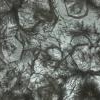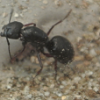Your sources, as they are provided in your post, are questionable at best. Your chart on pH effect on preservative efficacy sites references that you do not provide, so the exact context of the chart is impossible to be determined (efficacy in what, makeup, food, drugs, arthropod enthusiest product?). The second figure, from the Journal of Applied Oral Science (?),forces me to make several assumptions since, once again you provide no context for your source. What assumptions I can draw from the limited text is that the chart lists the concentration of methylparaben in (prescription?) drugs on the Brazilian market for use in humans to treat something to do with Oral Science. Again, context in the form of the full article will help with clarification, not to mention show us the methods and more results of the study. So far, with the sources provided, I can draw the conclusion that I, as a human can use methlyparaben in concentrations of around 0.1% to treat something to do with Oral Science (which I am still not clear what Oral Science is, having to do with a mouth or something like oral traditions, but instead of folk tales, villages pass science from one generation to the next) as long as pH of the solution containing the methylparaben is somewhere between 4-8 (but I can't determine if that is even correct because I can not see the references sited in the table). I guess that is some relief if I ever personally engage in oral science. Using these references seems an awful like comparing apples to oranges, and seeing as the subject of this forum are arthropods, not mammals, more relevant and properly cited sources are needed in my opinion.
Sorry I assumed if you wanted to read the references for the chart that you would 1) look at the url and 2) google the title of the chart. It is the second link:
http://www.americanp...a-Preservative/
If you had bothered to actually read the second source the full text is very obviously linked on the left above the chart should you wish to read it. Had you clicked to read the full article you would have seen that they were comparing the concentrations of methylparaben used as a preservative in oral analgesic solutions just as the title of the chart suggests. It is a perfect citation for my assertion about the concentration of methylparaben needed to abate mold/fungus/bacterial growth in a test tube containing distilled water.
In your original DIY thread, Terry offered his professional opinion that your methods could prove dangerous/lethal for ant colonies. I am fairly certain he did not announce that it will flat out kill all ants.
Here is a quote where he claims my guide could kill peoples ants: "that will...at worst, kill the ants of users who attempt them." That is quite an accusation to make.
I am not supporting byFormica or Terry, I am simply pointing out that you are not providing any sources to counteract the claims put forward by byFormica. The links your have provided offer no context, and what assumptions I can make from them lead me to believe they are about use of methylparaben in mammals i.e. humans.
You are disparaging my sources without having bothered to investigate them at all...I'm not sure what you are adding to this discussion?
Thank you for linking your full sources. Now we are getting to the foundation of citing proper sources in a semi-formal manner. I really do understand your frustration that I wouldn't chase your sources, but then again, I am not the one trying to make the point. The burden of proof falls to the person with something to prove. I wish it wasn't true, but writing papers in college and in my job have sure taught me that.
After reading the sources again, I am still fairly certain that they do not pertain to the topic of using a solution of methylparaben as a safe anti-microbial (etc.) replacement for watering your ants. The article pertaining to the table you linked is dealing with "developing preservation systems for multi-use oral, topical and parenteral medicinal products" (Elder, Crowley 2012). It continues to talk about the efficacy of antimicrobials in certain pH ranges, 4-8 being preferable for methylparabens (Elder, Crowley 2012). Given that the pH of distilled water is, on average, 5.7 (Kulthanan, Nuchkull, Varothai 2013), this supports that methylparabens are suitable as an antimicrobial for use in topical/parenteral medical products (Elder, Crowley 2012). I failed to glean (may be my fault, maybe not) the desired concentration of methylparaben to keep in solution (for max effectiveness or safety), but did read that the concentration of it will decrease over time as it is unstable (Elder, Crowley 2012). It isn't much of a stretch to say it will work in a simple solution with distilled water as an antimicrobial, but the paper goes on to say that "interactions with other components within the product (drug, excipients, pack or delivery device)" could compromise preservative efficacy (Elder, Crowley 2012) without listing any specific compounds that could affect the methylparaben, for example. So hey, lets stick to supported facts. With all of that aside, the article dealing with medicines used in dentistry is just off topic, and it is generally bad form to make assumptions from unrelated topics without further support.
Looking at your further support, you provide another article pertaining to medicines used in dentistry. This time the papers objective was to "To detect the presence and concentration of methylparaben in cartridges of commercial Brazilian local anesthetics" (Rodriguez da SILVA, et al. 2012). The results of the study where that "When detected in the solutions, the methylparaben concentration ranged from 0.01% (m/v) to 0.16% (m/v). One glass and all plastic cartridges presented methylparaben" (Rodriguez da SILVA, et al. 2012). Mission accomplished I would say on the part of the researchers. They found methylparaben in varying concentrations and go on to say that it is important to alert dentists to its presence because some people may be allergic (Rodriguez da SILVA, et al. 2012). The article does not specualte about what concentrations are safe or which may trigger the allergy, but simply states that it is an effect antimicrobial agent and is found in cosmetics, pharmaceutical products, and some foods (Rodriguez da SILVA, et al. 2012). The article goes on to talk about how rare hypersensitivity is, but does not other researchers have documented it. It goes on to cite Mason, et al. about methylparabens effect on rats, causing respiratory depression, fatigue, and ataxy at doses higher than 165 mg/kg (Rodriguez da SILVA, et al. 2012). It is noted the methylparaben is prohibited to be used with dental anesthetic cartridges in the U.S. in 1984 (Rodriguez da SILVA, et al. 2012). Again, interesting stuff on the occurrence of methylparaben in Brazilian dentistry and its possible side affects. I am now starting to waver on how safe this is for ants, reading about its affects on humans and rats. However, this does not pertain directly to ants and seems like attempts to draw conclusions from a study that simply measured how much methylparaben occurred in Brazilian dentistry products seems like bad form.
Onto Terry's quote, I think you say it best when you say "could kill". That really isn't a promise and sounds like Terry is speculating based on prior knowledge/experience. The comment has been removed so I can not see the part that was omitted but no matter. The part of quote you used still says the phrase "at worst". Again pretty broad. Off topic example, when I take out my garbage, at worst I could be attacked by rabid raccoons. Will it happen? Who knows. It is a possibility, just like it is a possibility that someone makes a mistake following your DIY guide and creates a solution which has to much methylparaben in it and kills their ants.
I am disparaging your sources because from the snapshot you offered into them where unrelated with anything to do with this forum. You offered us great insight on the use of methylparaben in dentistry and a preservative and antimicrobial. Does this mean that it can be safely used to keep test tubes clean of mold etc for your ants? Possibly, but these sources do not support that use, and it is sloppy science to borrow from totally unrelated field and apply it to the biology of an ant. None of that articles you cited even stated it was totally safe for human consumption, if not introduce the question that it may pose some risk to your health. Now how can you apply that to ants? Physiologies are totally different.
I am adding as much to this "discussion" as much as you are. I am showing that just because someone links (incomplete at the time) sources, and draws conclusions from those sources, doesn't mean their interpretation is right. Unless you are going to offer applicable research, for at least arthropods, that points to the benefits, or lack there of, of methylparaben you have offered up as much proof as byFormica has. None. Guess what. byFormica does not have to provide you that proof because you asked, and until you prove them wrong, I hope they don't. They have just as much right as a business to market their product in a way they want as you do to get on your internet soap box and try to convince everyone with misleading studies that they are wrong. Prove them wrong with definitive research, or hey, don't buy the product, and lets keep it all to one thread. I go back to my original post:
This thread is a toxic drama cesspool that is driving at a personal vendetta that adds nothing additional from the other threads that have been cited multiple times, and belongs in the sandbox with other uninformative and immature topics.
And now I am a part of that but hey, you made my last hour of work go by super quick. Thanks.
Citations:
Elder, P. D., & Crowley, P. J. (2012, January 01). Antimicrobial Preservatives Part Two: Choosing a Preservative. Retrieved April 25, 2017, from http://www.americanp...a-Preservative/
Kulthanan, K., Nuchkull, P., & Varothai, S. (2013). The pH of water from various sources: an overview for recommendation for patients with atopic dermatitis. Asia Pacific Allergy,3(3), 155-160. doi:10.5415/apallergy.2013.3.3.155
Silva, G. H., Bottoli, C. B., Groppo, F. C., Volpato, M. C., Ranali, J., Ramacciato, J. C., & Motta, R. H. (2012). Methylparaben concentration in commercial Brazilian local anesthetics solutions. Journal of Applied Oral Science,20(4), 444-448. doi:10.1590/s1678-77572012000400009


 This topic is locked
This topic is locked





















